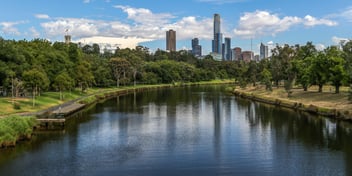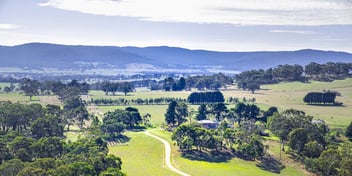New film urges relief for "dying" river
In a bid to save Victoria’s most flow-stressed river, a community protection group has produced The River Moorabool, a film to raise awareness of the ecological damage occurring in the waterway due to a lack of sufficient environmental water allocations.
People for a Living Moorabool (PALM) coordinator Cameron Steele said the river, which currently receives about 5000 megalitres per year in environmental flows, requires and deserves much more.
“The Moorabool River will continue to deteriorate and die unless we give back some of its water. We’re calling on the Victorian government to give back 20,000 megalitres per year,” he said.
“We are facing our last chance to secure a long-term future for this river and its wildlife. After seeing our film, we want citizens using the river and drinking its water to tell the Victorian government to give the Moorabool River the regular decent drinks it deserves.”
Steele said the Moorabool has reached a critical point following decades of having its water reallocated for human purposes, which in turn has had an impact on the local flora and fauna that rely on the river for habitat.
“The Moorabool flows from the Central Highlands near Ballarat through to Geelong — in theory. Sometimes, the Moorabool barely makes it to its junction with the Barwon River,” he said.
“It’s Victoria’s most flow-stressed river. By the time it joins the Barwon River, about 90% of the Moorabool’s natural flow is now taken for human use, primarily for Ballarat and Geelong.
“Despite the pressure, the Moorabool still has wonderful gorges and valleys. Some sections contain iconic Australian wildlife, such as the platypus and rakali, as well as beautiful riverside bushland. However, unless the Moorabool gets more water to restore its health, the river will continue to deteriorate and completely die.”
A sustainable future
Steele said PALM would like to see more support from the government in terms of progressing alternative water sources for human use, particularly in light of predicted population growth and climate change.
“The original Sustainable Water Strategy was quite a revolutionary document. It sets out water policy to 2055. There were some gains for the Moorabool under the strategy, in that there was a small environmental allocation,” Steele said.
“But it also set the premise that the river should have an equal footing with other water users.
“One of the things the strategy comments on is when Geelong and Ballarat move to recycled water reuse, there'd be extra water available for the Moorabool. We are disappointed that this plan hasn't progressed.
“The government is stalling on the notion of recycled water for direct potable reuse. But we believe it is part of the future. We are on a trajectory to double our population by 2060. And our rivers, particularly the Moorabool, cannot afford to give one more drop.
“They’re dying as a result of the reallocation and the stress we humans have put on them. The Moorabool is only one serious drought away from collapsing completely.”
Consideration of the Moorabool’s long-term resilience is overdue, Steele said, and there needs to be a rethink of policy around bulk water entitlements in order to enable more sufficient drought relief strategies for the waterway.
“How do we bring some resilience back to the river? It may well be that the set-in-stone bulk entitlements become far more adaptive,” he said.
“Water authorities are able to go to our rivers when there's plenty of water in them, but when it comes to a drought, the river shouldn't be the last entity that we give attention to.”
Premiere showing
[embed]https://vimeo.com/349830144[/embed]
The River Moorabool premiered at the Mechanics' Institute in Ballarat on 26 June, with the second showing planned at Deakin University in Geelong on 3 June.
PALM supporter, Moorabool River farmer and film production team member, Ian Penna said: “We have watched the river deteriorate because of lower flows. Scientific research from 2005 shows the Moorabool needs a minimum increase in its environmental flow of 20,000 megalitres a year if it is to have a healthy future”.
“We created this film, The River Moorabool, which documents the best and worst of the river and explores how we can restore it,” he said.
“Options include smarter management of farm and government dams to reduce water loss/waste plus increased urban use of recycled water, waste water, and desalination.”
For more information on the film's 3 July screening at Deakin University, visit Eventbrite for ticketing information.



